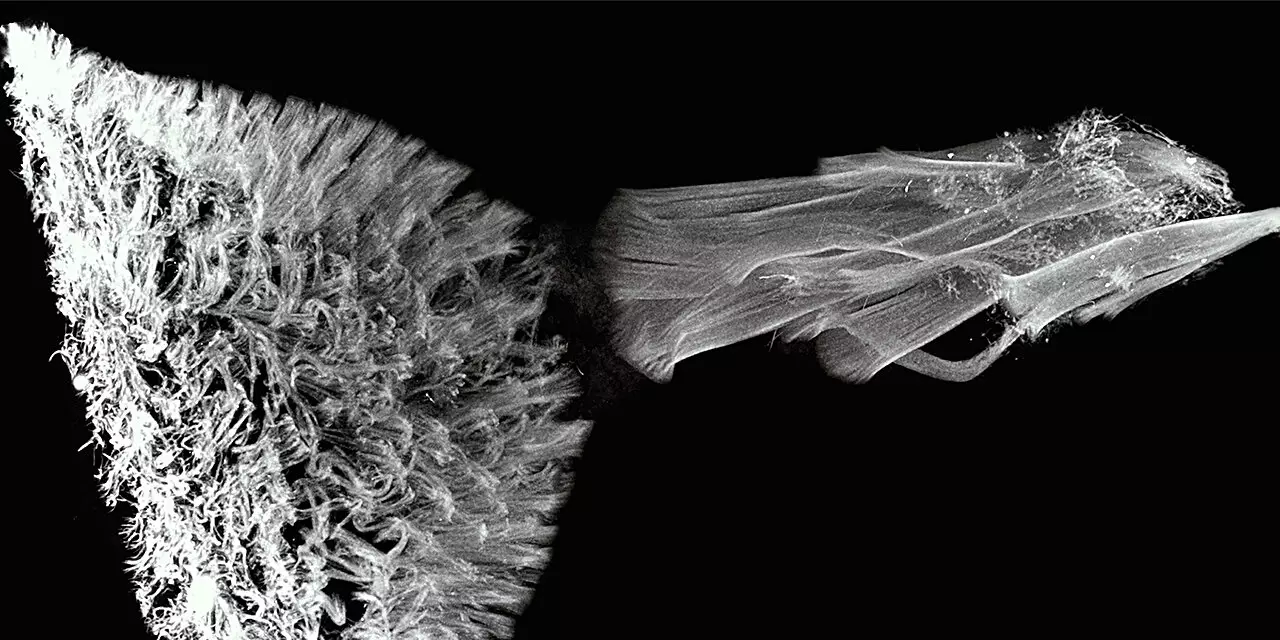The history of scientific advancement is often characterized by revolutionary shifts in understanding, with previous theories being dismantled and reshaped by groundbreaking discoveries. Such transformations are critical, not only for the advancement of knowledge but for the very evolution of our understanding of biology. The recent work conducted by the Kanso Bioinspired Motion Lab at the USC Viterbi School of Engineering encompasses this paradigm shift beautifully. Their latest publication in Nature Physics, entitled “Flow physics guides morphology of ciliated organs,” offers a fresh perspective on how the distinct structures of ciliated organs in various organisms are governed not merely by evolutionary pathways but rather by the practical demands of fluid dynamics.
Redefining Cilia Functionality
Traditionally, biologists have attempted to understand the mechanics of cilia—a vital component in various organisms where they function to pump fluids—through the lens of evolutionary design. The dichotomy between the “flame” model and the “carpet” model has long been observed. The “carpet” model, typically found in humans, consists of a dense cluster of short cilia aligned perpendicularly to the epithelial surface. In contrast, the “flame” model features long, tightly packed cilia that beat in a longitudinal manner, typically seen in many smaller animals. Historically, the differentiation between these cilia types has been oversimplified, disproportionately focused on an evolutionary lineage rather than attributing significant importance to their functional requirements.
Kanso and her team’s research flips this narrative on its head by suggesting that it is, in fact, the pumping needs of fluids that dictate cilia morphology. This insight contributes to understanding how form is inherently tied to function—a core principle that resonates across numerous scientific fields. Their findings underscore a pivotal shift towards recognizing that structural diversity among cilia should be viewed through the lens of mechanical constraints rather than solely through the historical narrative of evolutionary development.
Design Rules: A Spectral Approach
This groundbreaking perspective leads to a fascinating conclusion: the various ciliated organ designs exist along a spectrum, ranging from carpets to flames. By focusing on two main structural parameters—lumen diameter and cilia-to-lumen ratio—the research team has successfully mapped out a continuum representing the diversity of ciliated ducts. This nuanced understanding reveals that structural designs at both extremes of the spectrum achieve optimal flow rates and pressures necessary for physiological functions such as bulk transport and filtration. On the other hand, the intermediate designs cleverly balance these demands to create efficient hybrids.
This unified fluid model possesses profound implications for both the study and treatment of conditions linked to cilia dysfunction. Illnesses such as bronchiectasis and hydrocephalus, where proper cilia function is vital, could be better understood and managed through the lens of this new paradigm. The findings also pave the way for deeper explorations into organ-specific functions; for instance, ciliary flames could serve as a pivotal model for investigating renal diseases.
Mathematics Meets Biology: A New Methodological Framework
The interplay between experimental research and mathematical modeling in Kanso Lab’s work sets a captivating stage for future studies. The challenge of accurately measuring ciliary beat and fluid flow in intricate biological systems has historically stifled progress in this domain. However, through rigorous methodologies that combine theoretical constructs with physical experiments, the lab is trailblazing a path forward that is not only unique but also refreshingly intuitive.
What remains particularly compelling is how this research reframes a long-standing dichotomy and suggests that what seemed to be two distinct operating principles are actually part of a continuous spectrum. This reframing is not just a simplification; it transforms a complex challenge in biological fluid dynamics into a more accessible understanding that stimulates further inquiries and innovative solutions.
The implications for engineering, medicine, and biology are nothing short of transformative. By recognizing the connection between cilia design and fluid mechanics, we position ourselves to better address the myriad health issues arising from ciliary malfunction while celebrating the intricate designs that nature has crafted through functional need over eons. Kanso’s pioneering work serves as a clarion call for a more integrated approach—one that joins biology, physics, and engineering in the quest for knowledge and healing.


Leave a Reply